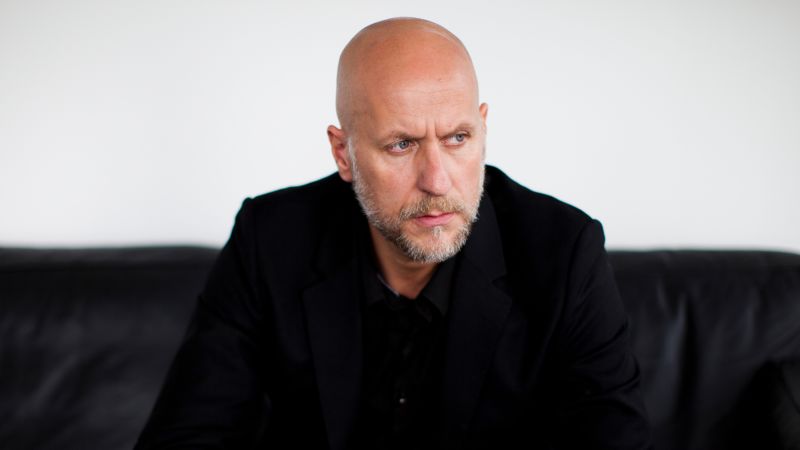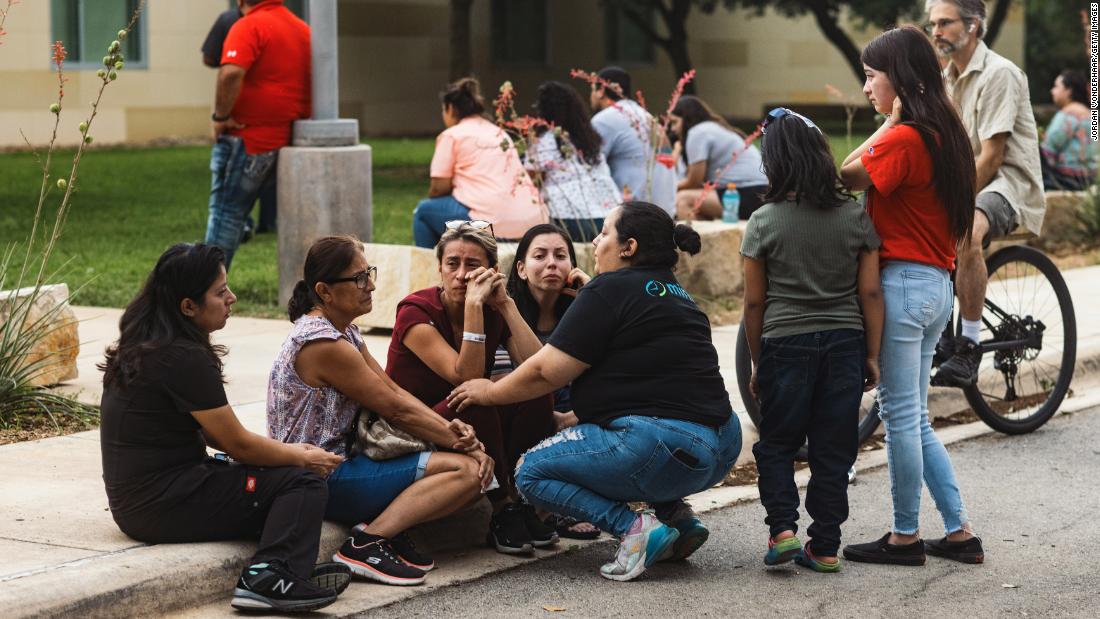They say the procedure has saved multiple lives over the past year
New Orleans EMS uses unique lifesaving technique for 100th time Sunday morning
They say the procedure has saved multiple lives over the past year
OF A DIFFERENCE IT HAS MADE THE THE LIFEBLOOD OF LIFE SAVING FOR NEW ORLEANS. EMS IS, WELL, BLOOD. AND FOR THE PAST 12 MONTHS, THEY’VE HAD A QUICKER WAY TO GET IT TO PEOPLE IN NEED, INCLUDING A WOMAN SATURDAY NIGHT ON BOURBON STREET WHO MAY WELL NOT BE WITH US IF THEY DIDN’T HAVE THAT ABILITY. THIS IS THE LIFEBLOOD THAT USED TO NEXT TO THE BLOOD. THIS IS THE TOOL NEW ORLEANS DMS HAS BEEN USING FOR THOSE 12 MONTHS TO SAVE LIVES. IN A WAY, NOT MANY EMERGENCY SERVICES AROUND THE COUNTRY CAN THEY USE IT TO GIVE BLOOD TO LOSING IT RIGHT THERE ON THE SCENE INSTEAD OF MAKING THEM WAIT UNTIL THEY CAN TO A HOSPITAL. MY FIRST EVER BLOOD ADMINISTRATION, THE PATIENT NORMALLY WOULD NOT HAVE DONE WELL, BUT BY THE TIME WE GOT THAT PATIENT TO THE HOSPITAL. THEY WERE TALKING AND THEY WEREN’T TALKING BEFORE. THOMAS MORROW IS THE MAN WHO USED THAT TOOL TO GIVE THE PERSON SHOT ON BOURBON SATURDAY NIGHT BLOOD IN FACT, HE’S DONE IT A DOZEN TIMES OVER THE PAST YEAR. HE MANAGED TO GET BLOOD TO PEOPLE IN 10 MINUTES AS OPPOSED TO THE NEARLY 45 MINUTES. IT CAN SOMETIMES TAKE TO GET THEM TO A HOSPITAL. QUICK RAPID BLOOD ADMINISTRATION IS THE MOST IMPORTANT THING THAT YOU CAN DO BESIDES GETTING THEM TO THE HOSPITAL AS QUICKLY AS POSSIBLE. I FEEL A LOT BETTER NOW THAT I CAN ACTUALLY MAKE MORE OF A DIFFERENCE THAN I COULD BEFORE. AND MORROW WAS PART OF A MILESTONE SATURDAY NIGHT IT WAS THE 100TH TIME THE NEW ORLEANS EMS USE THIS SERVICE, ONE THEY’D BEEN TRYING TO GET IN PLACE YEARS. BUT REGARDLESS, YOU KNOW, NEW ORLEANS WILL PROBABLY CONTINUE TO HAVE SOME CHALLENGES. BUT WE ARE ALWAYS GOING TO BE DEDICATED TO RISING TO THAT AND TO GIVING THE RESIDENTS AND BUSINESSES A SIGNALS THE CARE THAT THEY NEED. SO WHETHER 100 WAS HIGHER, 100 IS LOW, WHETHER WE WERE, YOU KNOW, REGARDLESS OF WHY WE’RE GIVING IT, WE WERE JUST HAVING TO AND THEY HAVE SEEN BETTER OUTCOMES FOR PATIENTS SINCE. THIS PROGRAM WENT INTO PLACE FOR THE PARAMEDICS THEMSELVES, WHETHER IT’S A QUIET OR THE MIDDLE OF BOURBON, THEY’RE READY TO DO WHAT THEY NEED. HONESTLY, DON’T THINK ABOUT IT. I’M LOOKING AT MY LOOKING AT WHAT NEEDS TO DO IN NEW ORLEANS. VMS DOES NOT CHARGE PATIENTS FOR THIS SERVICE. THEY USE THEIR OWN BUDGET TO PAY FOR IT. REPORTIN
GET LOCAL BREAKING NEWS ALERTS
The latest breaking updates, delivered straight to your email inbox.
New Orleans EMS uses unique lifesaving technique for 100th time Sunday morning
They say the procedure has saved multiple lives over the past year
The New Orleans EMS administered blood to a woman shot on Bourbon Street Sunday morning while she was still in the street. They say this is a rare ability for EMS services across the country and saves lives. Thomas Mauro was the paramedic who gave her the blood using a Lifeflow device. He was able to get blood into the victim in just 10 minutes as opposed to the normal 40 or so minutes it can take to get victims' blood in a hospital. “Quick, rapid blood administration is the most important thing you can do besides getting them to the hospital as quickly as possible. I feel better now that I can make more of a difference than I could before," Mauro said.This was the 100th time New Orleans EMS was able to use this service since it launched almost exactly a year ago. They say they are seeing much better outcomes for people facing trauma that received the treatment, as opposed to those who didn't in years past.“My first ever blood administration the patient normally would not have done well but by the time we got that patient to the hospital they were talking, and they weren’t talking before," Mauro said.They say other EMS services across the world are looking to them as an example and are trying to institute the practice in their own cities. “Regardless, you know New Orleans will probably continue to face challenges, but we will remain dedicated to rise to that and continue and giving residents and visitors in the state of New Orleans the care that they need. So, whether 100 was high or 100 was low, regardless of why we're giving it, we were just happy to," said New Orleans EMS Capt. Janick Lewis.The service is currently being paid for out of the EMS budget. Patients are not charged. Data is continuing to be collected to determine the effectiveness of the treatment, but members say it seems to be effective.
NEW ORLEANS —
The New Orleans EMS administered blood to a woman shot on Bourbon Street Sunday morning while she was still in the street. They say this is a rare ability for EMS services across the country and saves lives.
Thomas Mauro was the paramedic who gave her the blood using a Lifeflow device. He was able to get blood into the victim in just 10 minutes as opposed to the normal 40 or so minutes it can take to get victims' blood in a hospital.
“Quick, rapid blood administration is the most important thing you can do besides getting them to the hospital as quickly as possible. I feel better now that I can make more of a difference than I could before," Mauro said.
This was the 100th time New Orleans EMS was able to use this service since it launched almost exactly a year ago. They say they are seeing much better outcomes for people facing trauma that received the treatment, as opposed to those who didn't in years past.
“My first ever blood administration the patient normally would not have done well but by the time we got that patient to the hospital they were talking, and they weren’t talking before," Mauro said.
They say other EMS services across the world are looking to them as an example and are trying to institute the practice in their own cities.
“Regardless, you know New Orleans will probably continue to face challenges, but we will remain dedicated to rise to that and continue and giving residents and visitors in the state of New Orleans the care that they need. So, whether 100 was high or 100 was low, regardless of why we're giving it, we were just happy to," said New Orleans EMS Capt. Janick Lewis.
The service is currently being paid for out of the EMS budget. Patients are not charged. Data is continuing to be collected to determine the effectiveness of the treatment, but members say it seems to be effective.






 English (US) ·
English (US) ·